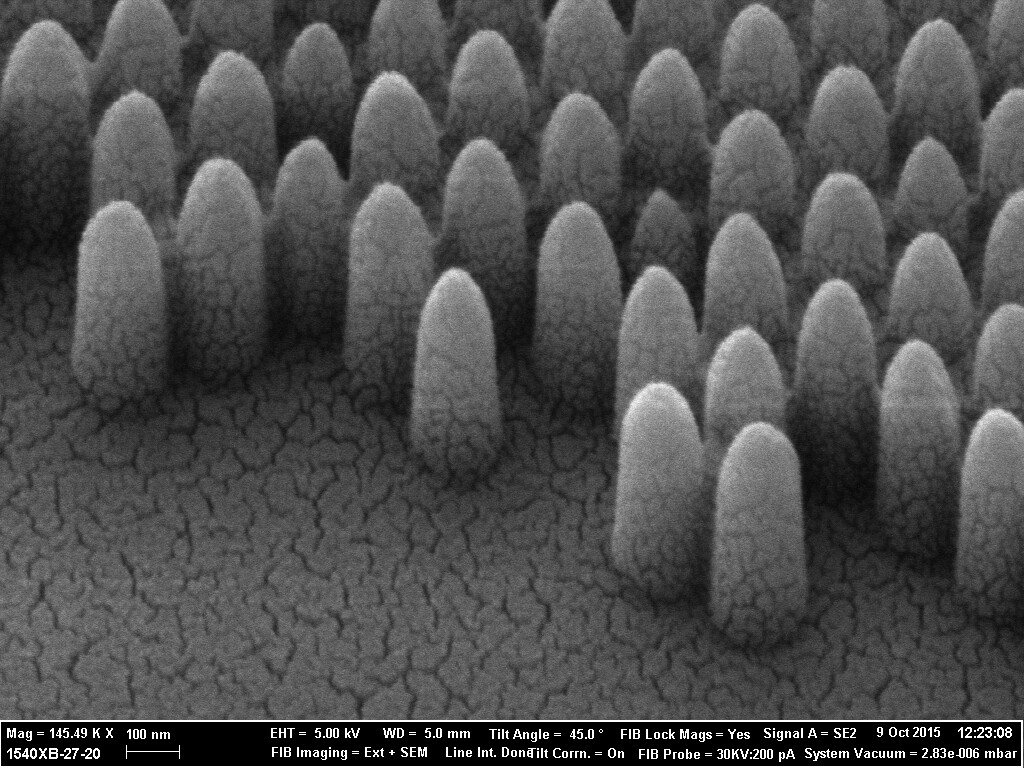A revolutionary new type of smart window developed by the University College London (UCL) and the Engineering and Physical Sciences Research Council (EPSRC) could cut window-cleaning costs in tall buildings while reducing heating bills and boosting worker productivity. Partially inspired by the reflective properties of moth eyes, this smart window is said to be self-cleaning, energy saving, and anti-glare.
When rain hits the outside of the smart window it forms spherical droplets that roll over the surface and pick up dirt, dust and other contaminants, then carries them away. This can either eliminate or reduce the need for manual cleaning.
A very thin (5-10nm) thermochromic coating of vanadium dioxide prevents heat loss during cold weather, plus it keeps heat-causing infrared radiation from entering during hot weather. Thermochromic refers to the ability of a material to change color with changes to temperature. Vanadium dioxide is a cheap and abundant material, and offers a less expensive and more sustainable alternative to silver and gold-based and other coatings used by current energy-saving windows.

The smart window's anti-reflective properties are the result of a nanostructure (seen above) that mimics those found in the eyes of moths and other creatures that hide from predators. Researchers involved in the project pointed out this is the first time that anyone has combined both a bio-inspired nanostructure with a thermochromic coating. The net result is a self-cleaning, highly-performing smart window that they believe could reduce heating bills by up to 40 percent, while also reducing maintenance costs and improving worker comfort and productivity.
This latest project joins others over the last several years that have addressed the idea of self-cleaning, anti-glare windows. In 2009, researchers at Tel Aviv University looking into a cure for Alzheimers discovered a new nanomaterial that can repel dust and water and could provide a self-cleaning coating for windows or solar panels. Then in 2012, researchers at MIT found a new way to create arrays of nanotextures to produce glass that is self-cleaning, non-glare, and non-fogging.
Other projects have also taken their cues from the microstructure of moth eyes, including one conducted several years ago by a group of researchers in Japan that created an antireflective film coating for use on solar cells.
No exact date was given as to when the smart window developed by UCL and EPSRC will be ready for production.
Source: EPSRC





